Energy Utilization Potential of Wheat Straw in an Ecological Balance—A Case Study of Henan Province in China
Abstract
1. Introduction
2. Materials and Methods
2.1. Calculation Process of Energy Utilization of Wheat Straw Biomass Based on Ecological Balance
2.2. Prediction of Wheat-Sown Area and Yield in Henan Province
2.3. Calculation Method of Wheat Straw Yield
2.4. Calculation Method of Wheat Straw Retention Considering Ecological Balance
2.5. Calculation Method of Crop Yield of Wheat Straw Considering Ecological Balance
3. Results
3.1. Wheat Yield and Sown Area
3.2. Soil Equilibrium Scenario Considering Ecological Balance
3.3. Wheat Straw Demand Considering Soil Equilibrium
3.4. Wheat Straw Yield for Biomass Energy
3.5. Analysis of Potential Energy Utilization of Wheat Straw
4. Discussion
5. Conclusions
Author Contributions
Funding
Acknowledgments
Conflicts of Interest
References
- China Urban Low-Carbon Economic Network. Ecological Balance [EB/OL]. Available online: http://www.cusdn.org.cn/news_detail.php?id=228166 (accessed on 20 December 2018).
- International Energy Agency. Renewables 2018 [EB/OL]. Available online: https://www.iea.org/newsroom/news/2018/october/modern-bioenergy-leads-the-growth-of-all-renewables-to-2023-according-to-latest-.html (accessed on 20 January 2019).
- BP Statistical Review of World Energy 2018 [EB/OL]. Available online: https://www.bp.com/content/dam/bp/business-sites/en/global/corporate/pdfs/energy-economics/statistical-review/bp-stats-review-2018-full-report.pdf (accessed on 20 January 2019).
- National Bureau of Statistics of China. National Data. Available online: http://data.stats.gov.cn/easyquery.htm?cn=C01 (accessed on 1 November 2018).
- Chen, Y.M.; Liu, G.B.; Zheng, F.L.; Zhang, W. Proceeding and Application on Soil Erosion Model of RUSLE. Res. Soil Water Conserv. 2004, 11, 80–83. [Google Scholar] [CrossRef]
- Alejandro, M.D.; Omasa, K.J. Estimation of vegetation parameter for modeling soil erosion using linear spectral mixture analysis of land sat ETM data. ISPRS J. Photogramm. Remote Sens. 2007, 62, 309–324. [Google Scholar] [CrossRef]
- Li, T.H.; Zheng, L.N. Soil Erosion Changes in the Yanhe Watershed from 2001 to 2010 based on RUSLE Model. J. Nat. Resour. 2012, 27, 1164–1175. [Google Scholar] [CrossRef]
- Wen, L.L.; Zheng, F.L.; Yang, Q.S.; Shen, H.O. Effects of rainfall patterns on hillslope farmland erosion in black soil region of Northeast China. Shuili Xuebao 2012, 43, 1084–1091. [Google Scholar] [CrossRef]
- Wang, B.; Zheng, F.L.; Wang, Y.X. Adaptability analysis on soil erodibility models in typical thin layer black soil area of Northeast China. Trans. Chin. Soc. Agric. Eng. 2012, 28, 126–131. [Google Scholar] [CrossRef]
- Wei, Y.H.; Zhao, X.; Zhai, Y.L.; Zhang, E.; Chen, F.; Zhang, H. Effects of tillages on soil organic carbon sequestration in North China Plain. Trans. Chin. Soc. Agric. Eng. 2013, 29, 87–95. [Google Scholar] [CrossRef]
- Wilhelm, W.W.; Jane, M.F.; Douglas, L.K.; David, T.L. Corn Stover to sustain soil organic carbon further constrains biomass supply. Agron. J. 2007, 99, 1665–1667. [Google Scholar] [CrossRef]
- Sainju, U.M.; Lenssent, A.; Caesar-Thonthat, T.; Waddell, J. Carbon sequestration in dry land soils and plant residue as influenced by tillage and croprotation. J. Environ. Qual. 2006, 35, 1341–1347. [Google Scholar] [CrossRef]
- Manyowa, N.M.; John, L.S.; James, R.K; Raper, R.L.; Rocateli, A.C. Energy sorghum biomass harvest thresholds and tillage effects on soil organic carbon and bulk density. Ind. Crop. Prod. 2013, 43, 172–182. [Google Scholar] [CrossRef]
- Wang, X.B.; Wang, Y.; Dai, K.; Wu, X.P.; Zhao, Q.S.; Zhang, D.C.; Feng, Z.H.; Cai, D.X. Coupled energy and carbon balance analysis under dry land tillage system. Acta Ecol. Sin. 2011, 31, 4638–4652. [Google Scholar]
- Sonja, S.; Kirsten, W. Modelling sustainable bioenergy potentials from agriculture for Germany and Eastern European countries. Biomass Bioenergy 2009, 33, 603–609. [Google Scholar] [CrossRef]
- Cai, Y.Q.; Chou, H.G.; Xu, Z.G. Evaluation on potentials of energy utilization of crop residual resources in different regions of China. J. Nat. Resour. 2011, 26, 1637–1646. [Google Scholar] [CrossRef]
- Sun, Y.M.; Yuan, Z.H.; Sun, Z.J. The status and future of bioenergy and biomass utilization in China. Renew. Energy 2006, 2, 78–82. [Google Scholar] [CrossRef]
- Muth, D.J.; Bryden, K.M.; Nelson, R.G. Sustainable agricultural residue removal for bioenergy: A spatially comprehensive US national assessment. Appl. Energy 2013, 102, 403–417. [Google Scholar] [CrossRef]
- Zheng, D.; Chi, F.Q. A Comprehensive Evaluation on Strow Return to Soil in the Sustainable Development of Agriculture. Heilongjiang Agric. Sci. 2012, 1, 133–138. [Google Scholar] [CrossRef]
- Adusumilli, N.; Lee, T.; Rister, M.E.; Lacewell, R.D. The Economics of Mitigation of Water Pollution Externalities from Biomass Production for Energy. Resources 2014, 3, 721–733. [Google Scholar] [CrossRef]
- Gong, P.Q.; Li, X.Y. Study on the investment value and investment opportunity of renewable energies under the carbon trading system. Chin. J. Popul. Resour. Environ. 2016, 14, 271–281. [Google Scholar] [CrossRef]
- Miglietta, P.P.; De Leo, F.; Pizzi, S. The Water Footprint of Energy Crops for the Support of Italian Biodisel Production. In Proceedings of the XXVII Congresso Nazionale di Scienze Merceologiche-Qualità & Innovazione per una Economia Circolare ed un Futuro Sostenibile, Viterbo, Italy, 2–4 March 2016; Available online: https://www.researchgate.net/publication/297219965_THE_WATER_FOOTPRINT_OF_ENERGY_CROPS_FOR_THE_SUPPORT_OF_ITALIAN_BIODIESEL_PRODUCTION (accessed on 20 January 2019).
- Miglietta, P.P.; Giove, S.; Toma, P. An optimization framework for supporting decision making in biodiesel feedstock imports: Water footprint vs. import costs. Ecol. Indic. 2017, 85, 1231–1238. [Google Scholar] [CrossRef]
- National Bureau of Statistics of China. National Data. Available online: http://data.stats.gov.cn/easyquery.htm?cn=E0103 (accessed on 1 November 2018).
- Lu, B.; Chen, Y.J.; Wu, K.; Yuan, Z.; Xu, Y.X. Analysis and forecast for the potentiality of grain unit yield in the middle-long term in China. Chin. J. Agric. Resour. Reg. Plan. 2005, 26, 1–5. [Google Scholar] [CrossRef]
- Chen, B.M. On the comprehensive productive capacity and food security of future agricultural resources in China. Geogr. Res. 2002, 21, 295–304. [Google Scholar] [CrossRef]
- Kim, S.D.; Bruce, E.D. Global potential bioethanol production from wasted crops and crop residues. Biomass Bioenergy 2004, 26, 361–375. [Google Scholar] [CrossRef]
- Zeng, X.Y.; Ma, Y.T.; Ma, L.R. Utilization of Straw in Biomass Energy in China. Renew. Sustain. Energy Rev. 2007, 11, 976–987. [Google Scholar] [CrossRef]
- Yang, Y.L.; Zhang, P.D.; Zhang, W.L.; Tian, Y.; Zheng, Y.; Wang, L. Quantitative appraisal and potential analysis for primary bio-mass resources for energy utilization in China. Renew. Sustain. Energy Rev. 2010, 14, 3050–3058. [Google Scholar] [CrossRef]
- Liu, Z.; Lyu, Z.C.; Zhu, K.W.; Pu, G. Analysis of Biomass Energy Development Potential of Soybean Stover Based on Soil Function-included: A case study of Heilongjiang. J. Chongqing Univ. Technol. 2015, 29, 30–36. [Google Scholar]
- Wang, Y.J.; Bi, Y.Y.; Gao, C.Y. Collectable amounts and suitability evaluation of straw resource in China. Sci. Agric. Sin. 2010, 43, 1852–1859. [Google Scholar] [CrossRef]
- Liu, Z.; David, F. Soil function-included simulation on energy development potential of corn stover. Trans. Chin. Soc. Agric. Eng. 2014, 30, 236–243. [Google Scholar] [CrossRef]
- China National Soil Survey Office. China Soil and Henan Soil; China Agriculture Publisher: Beijing, China, 1995; ISBN 9787109037878. [Google Scholar]
- Al-kaisi, M.M.; Yin, X.; Licht, M.A. Soil carbon and nitrogen changes as affected by tillage system and crop biomass in a corn-soybean rotation. Appl. Soil Ecol. 2005, 30, 174–191. [Google Scholar] [CrossRef]
- Huggins, D.R.; Clapp, C.E.; Allmarass, R.R.; Lamb, J.A.; Layese, M.F. Carbon dynamics in corn-soybean sequences as estimated from natural carbon-13 abundance. Soil Sci. Soc. Am. J. 1998, 62, 195–203. [Google Scholar] [CrossRef]
- Barber, S.A. Corn residue management and soil organic matter. Agron. J. 1979, 71, 625–627. [Google Scholar] [CrossRef]
- Kong, A.Y.; Six, J.; Bryant, D.C.; Denison, R.F. The relationship between carbon input, aggregation, and soil organic carbon stabilization in sustainable cropping systems. Soil Sci. Soc. Am. J. 2005, 69, 1078–1085. [Google Scholar] [CrossRef]
- Liu, G.; Shen, L. Quantities Appraisal of Biomass Energy and Its Geographical Distribution in China. J. Nat. Resour. 2007, 22, 9–19. [Google Scholar] [CrossRef]
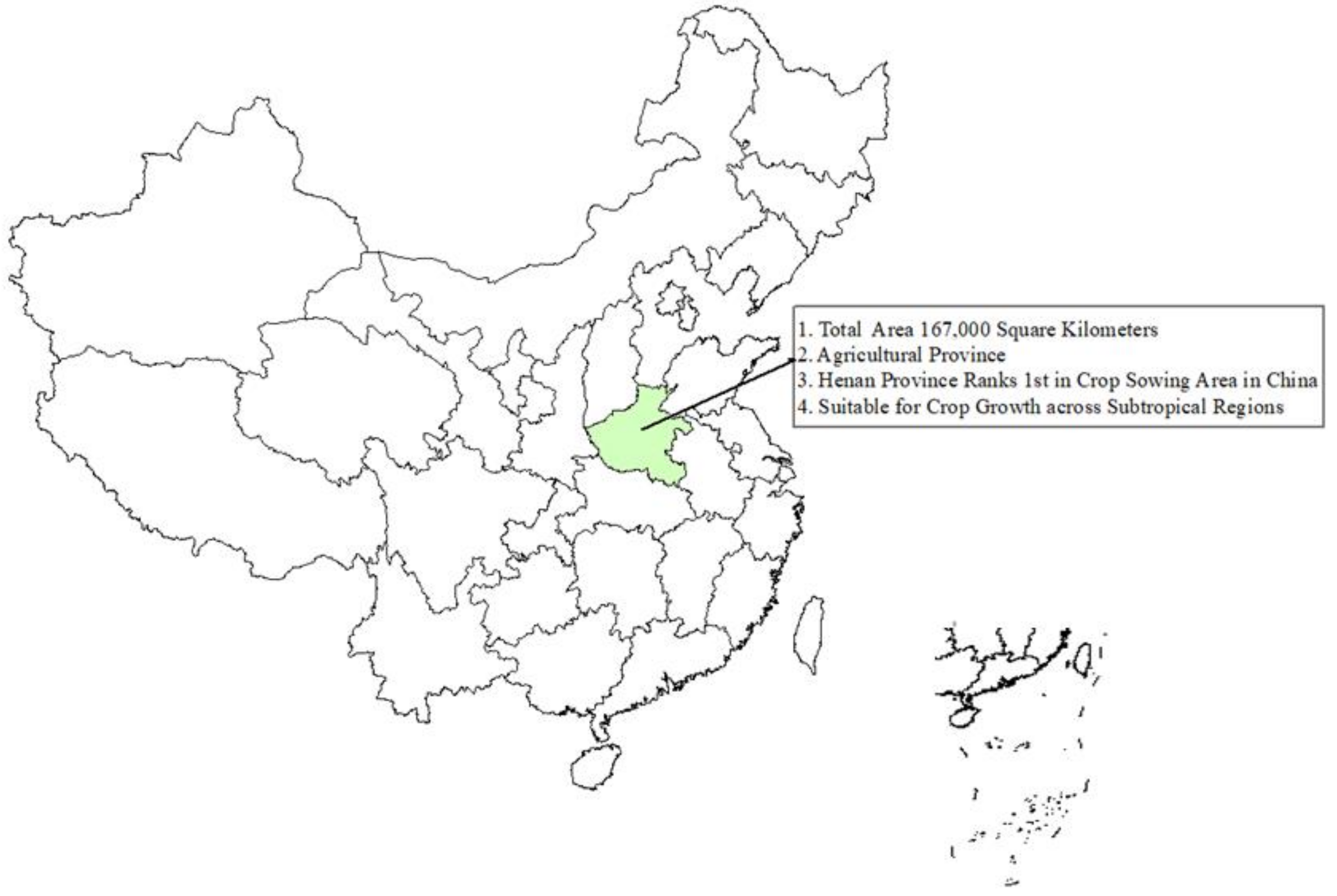
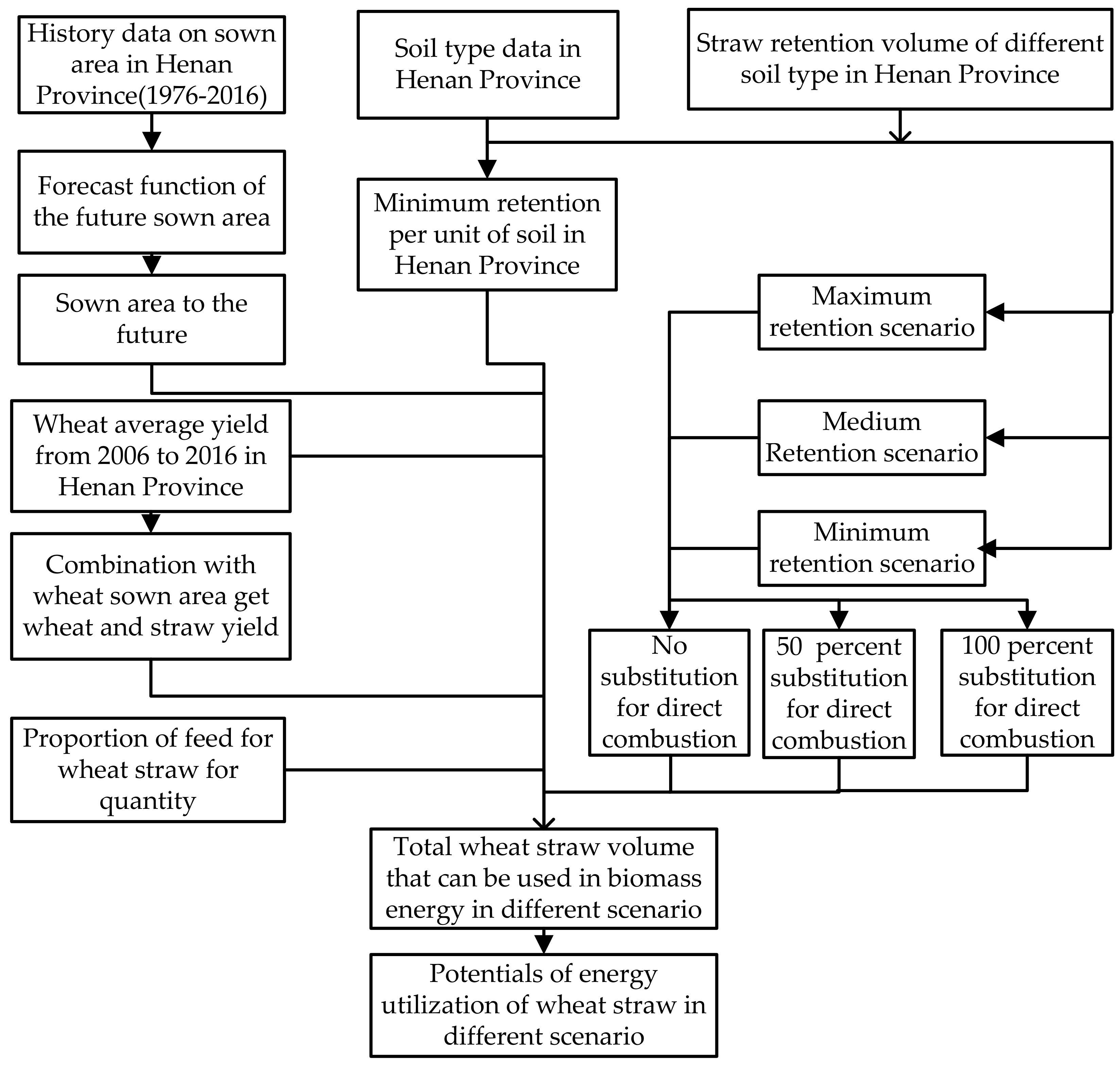
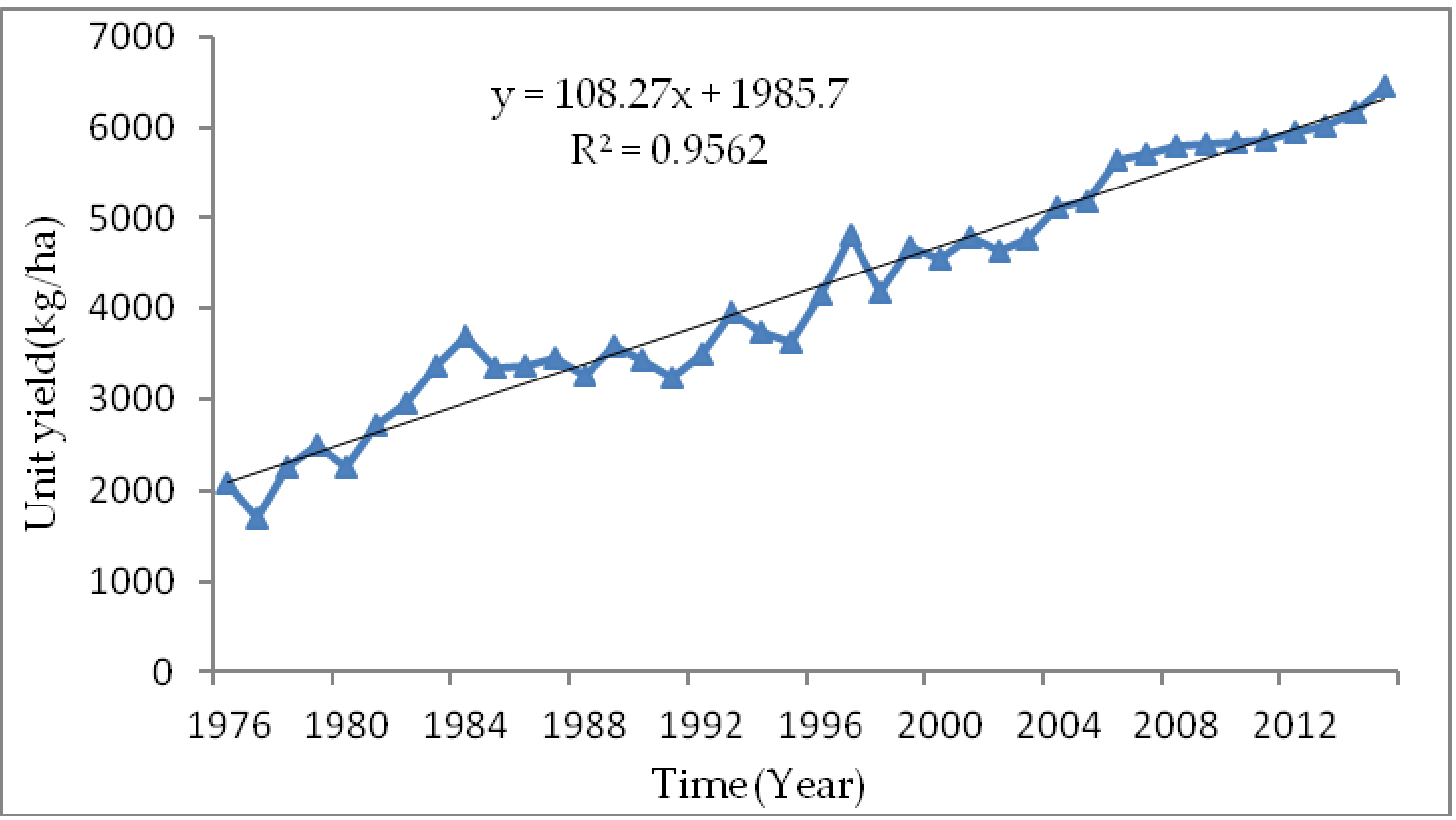
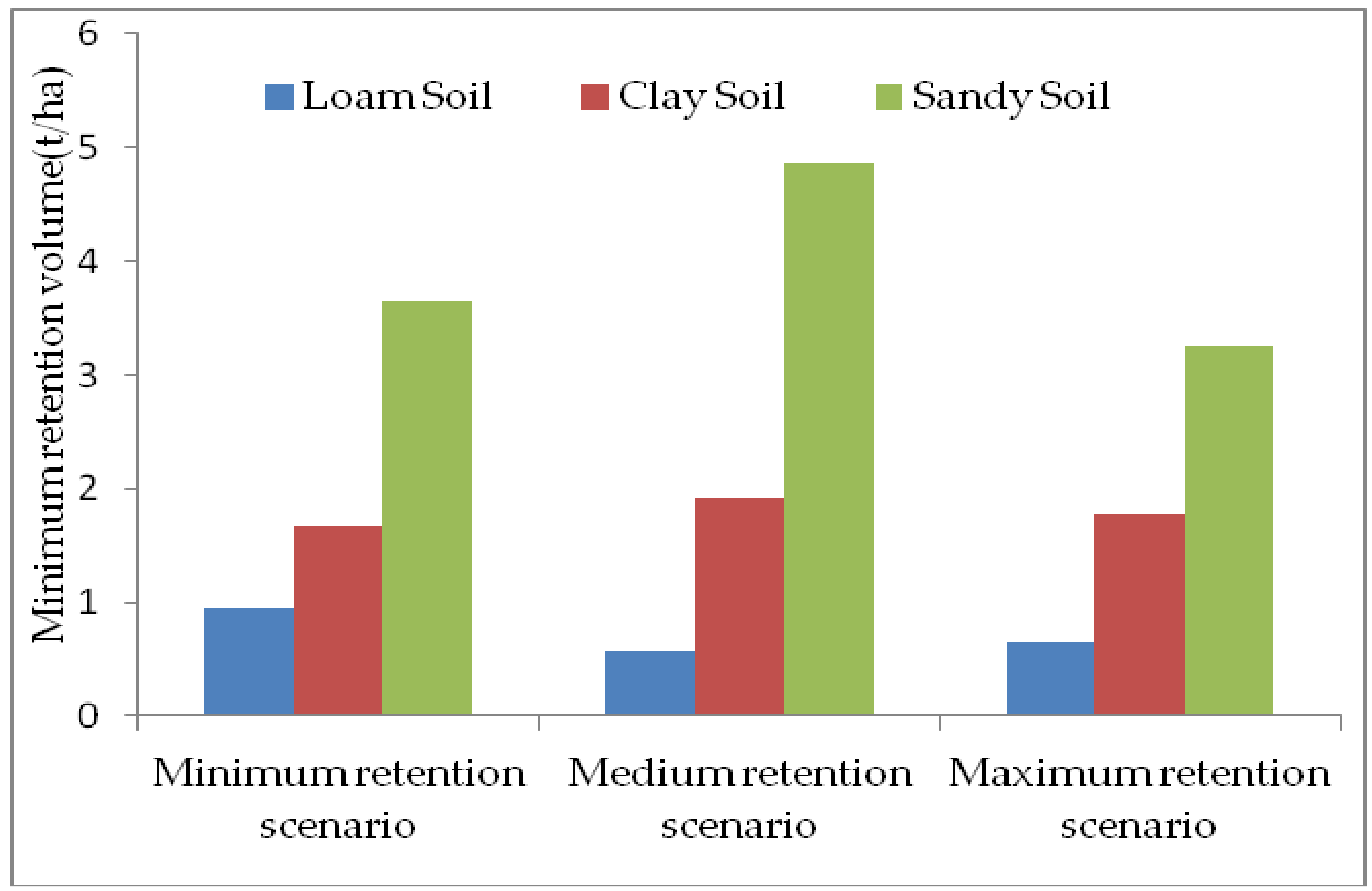
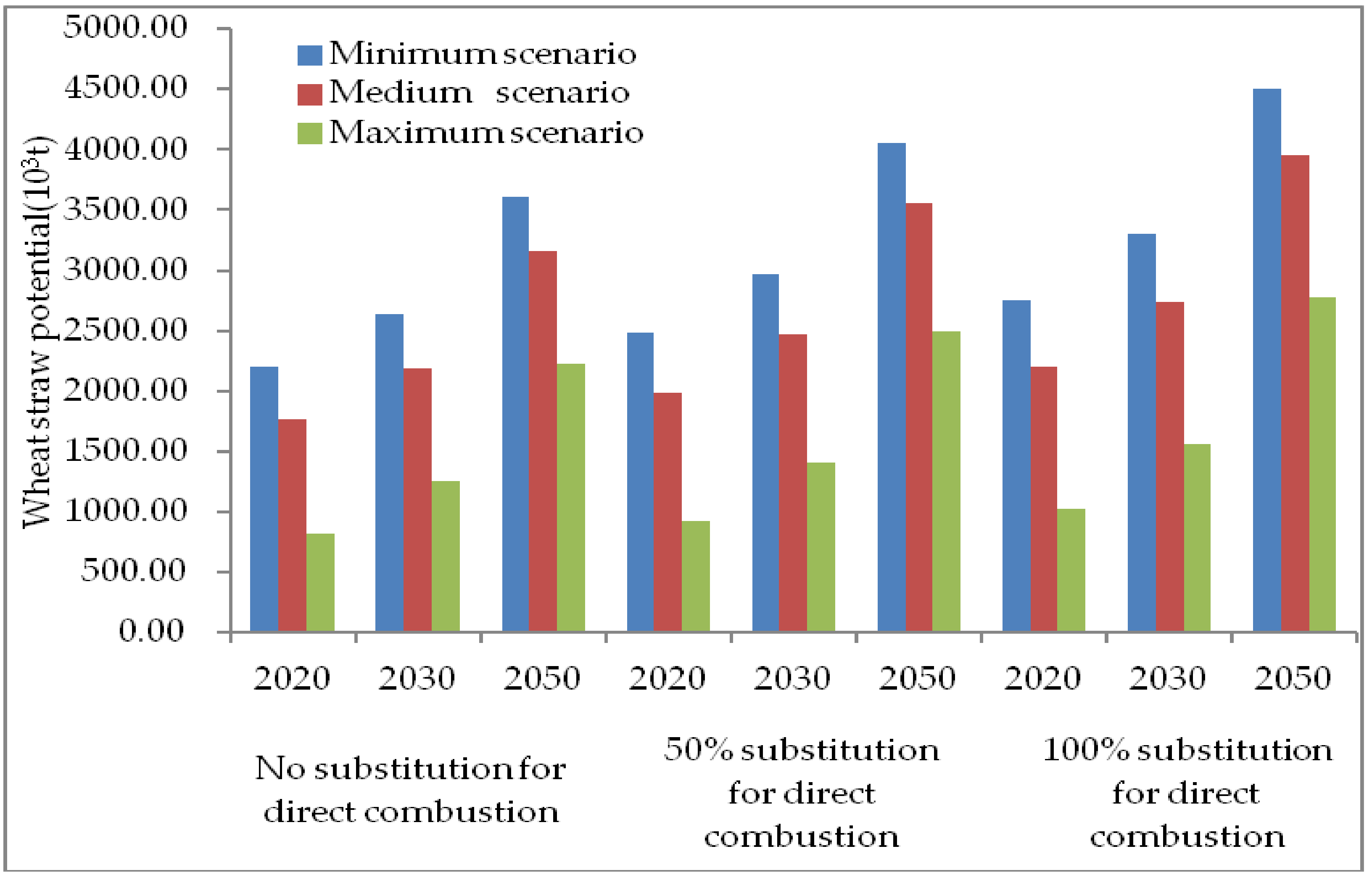
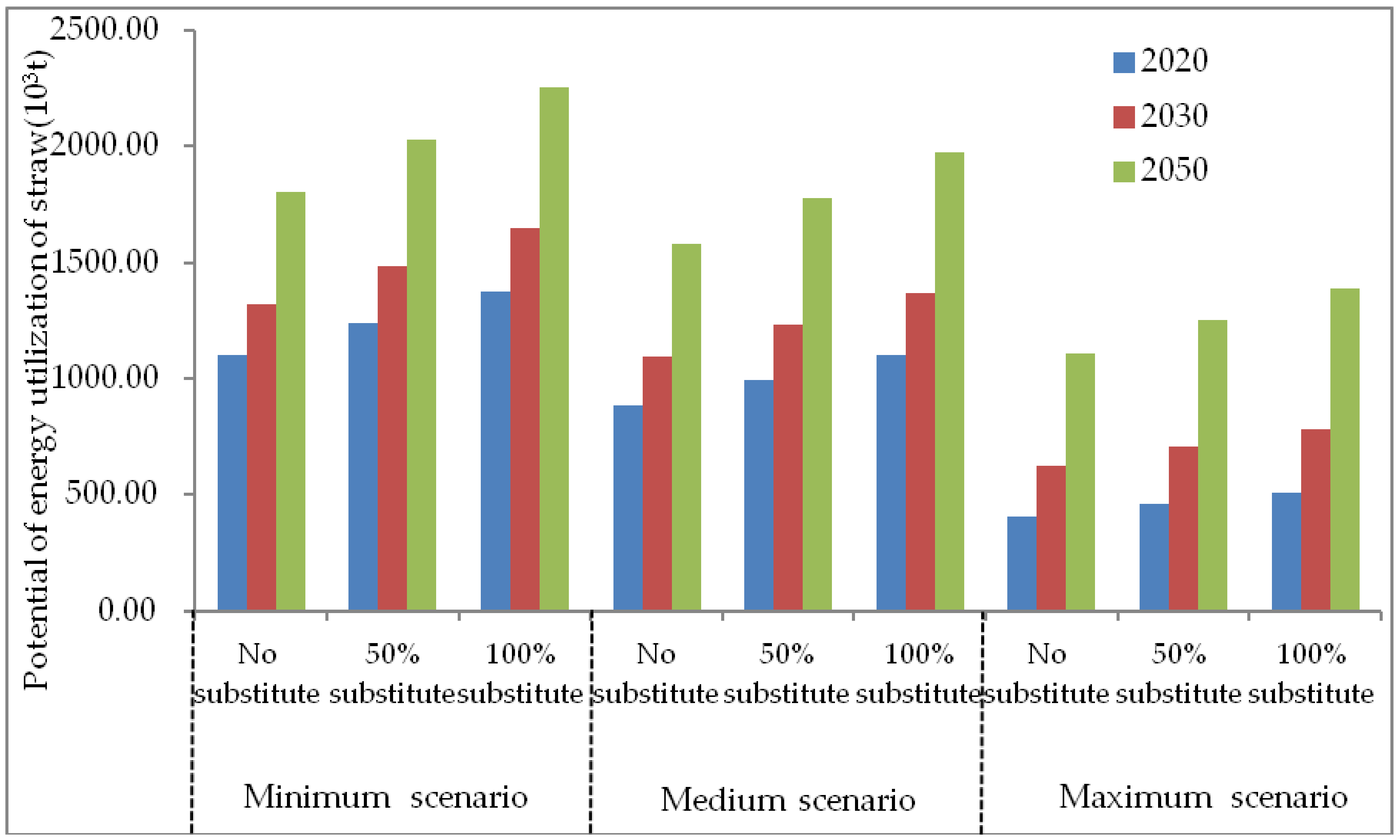
© 2019 by the authors. Licensee MDPI, Basel, Switzerland. This article is an open access article distributed under the terms and conditions of the Creative Commons Attribution (CC BY) license (http://creativecommons.org/licenses/by/4.0/).
Share and Cite
Zhichen, L.; Xuantong, Z. Energy Utilization Potential of Wheat Straw in an Ecological Balance—A Case Study of Henan Province in China. Resources 2019, 8, 41. https://doi.org/10.3390/resources8010041
Zhichen L, Xuantong Z. Energy Utilization Potential of Wheat Straw in an Ecological Balance—A Case Study of Henan Province in China. Resources. 2019; 8(1):41. https://doi.org/10.3390/resources8010041
Chicago/Turabian StyleZhichen, Lyu, and Zhu Xuantong. 2019. "Energy Utilization Potential of Wheat Straw in an Ecological Balance—A Case Study of Henan Province in China" Resources 8, no. 1: 41. https://doi.org/10.3390/resources8010041
APA StyleZhichen, L., & Xuantong, Z. (2019). Energy Utilization Potential of Wheat Straw in an Ecological Balance—A Case Study of Henan Province in China. Resources, 8(1), 41. https://doi.org/10.3390/resources8010041





